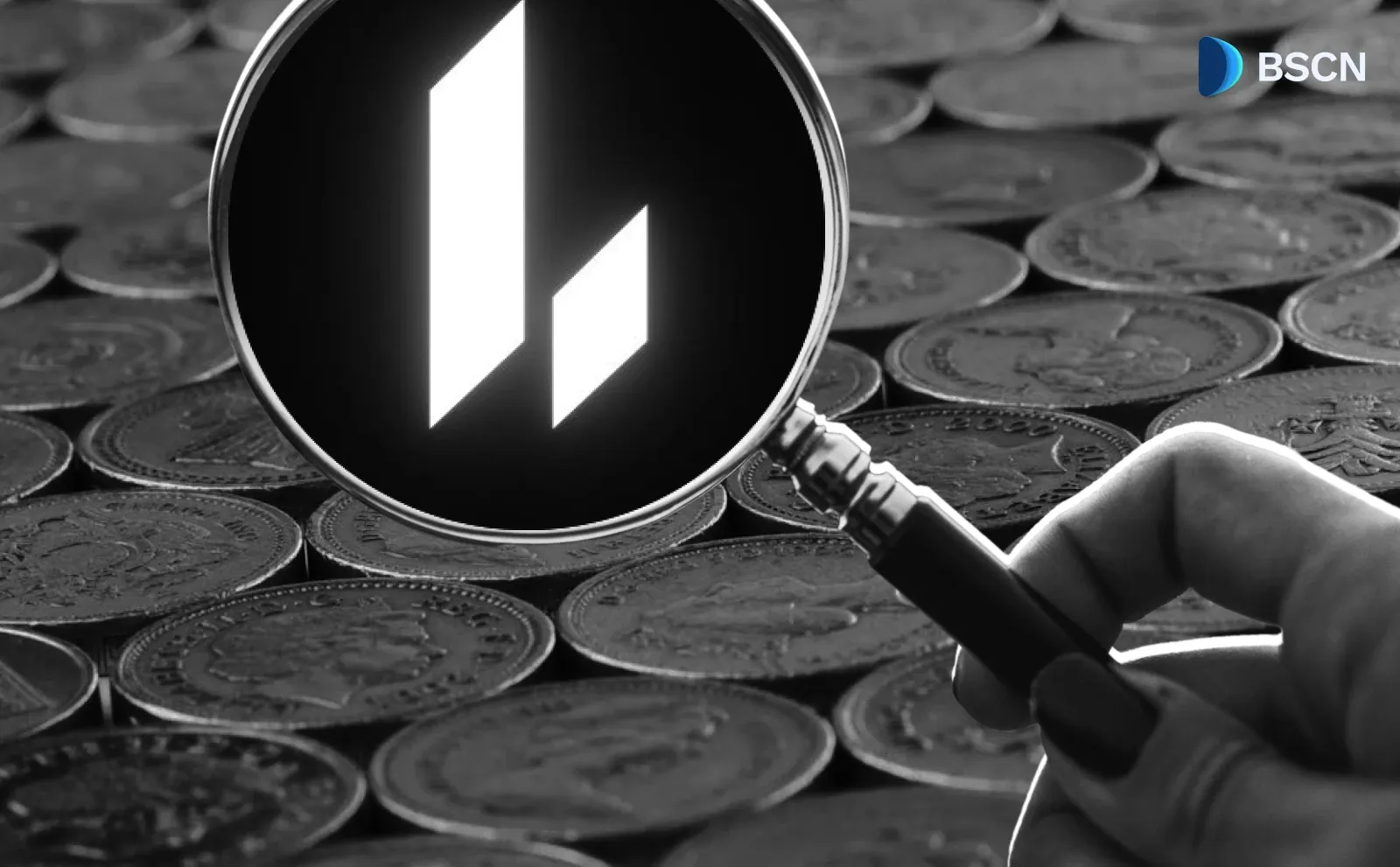News
(Advertisement)
Bitwise Files for First US Chainlink ETF With SEC

Bitwise files S-1 with SEC for first U.S. Chainlink (LINK) ETF, offering regulated exposure to the oracle network’s token with Coinbase Custody.
Soumen Datta
August 27, 2025
(Advertisement)
Table of Contents
Bitwise Seeks Approval for First U.S. Chainlink ETF
Bitwise Asset Management has filed an S-1 registration statement with the U.S. Securities and Exchange Commission (SEC) for a spot Chainlink (LINK) exchange-traded fund (ETF). The filing, submitted on August 25, 2025, marks the first attempt to launch a U.S.-listed investment product that directly holds LINK, the native token of the Chainlink oracle network.
If approved, the ETF would hold LINK in custody with Coinbase Custody Trust Company, the same provider used by other major crypto ETFs such as BlackRock’s iShares Bitcoin Trust and iShares Ethereum Trust. The shares would track the dollar price of LINK, giving investors regulated exposure to a widely used blockchain infrastructure token without the need to manage wallets or self-custody.
What the Filing Says
According to the S-1:
- The ETF would be passively managed, designed to mirror LINK’s market performance.
- LINK tokens backing the fund would be securely stored at Coinbase Custody.
- The ETF allows for in-kind creation and redemption, meaning investors could exchange LINK directly for shares and redeem shares for LINK.
- Shares would be listed and traded on a national securities exchange under a ticker yet to be announced.
This filing represents a regulatory milestone. Until recently, the SEC only permitted cash creation and redemption for crypto ETFs, requiring issuers to exchange fiat for tokens. By allowing in-kind transactions, the fund becomes more efficient for both institutional and retail investors.
Why Chainlink Matters
Chainlink is not a memecoin or speculative token. It is widely considered the industry-standard oracle network, connecting blockchains with real-world data and enabling cross-chain communication. Without oracles like Chainlink, smart contracts cannot access external information such as prices, payments, or compliance data.
Chainlink is used across decentralized finance (DeFi), tokenized assets, stablecoins, and institutional blockchain integrations. Its role is less about speculation and more about infrastructure, which explains why Bitwise chose LINK for a regulated ETF product.
Chainlink Reserve and Payment Abstraction
The ETF filing comes just weeks after Chainlink launched the Chainlink Reserve, an on-chain treasury mechanism funded by both enterprise and on-chain usage fees. The reserve already holds over $3.7 million worth of LINK since its early-stage rollout.
The reserve is powered by Payment Abstraction, a system that allows users to pay for Chainlink services in any asset—such as stablecoins or gas tokens—while programmatically converting those payments into LINK.
How Payment Abstraction Works
- CCIP (Cross-Chain Interoperability Protocol): Consolidates payments across multiple blockchains onto Ethereum.
- Automation: Converts assets into LINK without manual intervention.
- Price Feeds: Provides accurate market data to optimize conversions.
Currently, conversions are routed through Uniswap V3 on Ethereum for its liquidity. Future updates may include additional decentralized exchanges for improved efficiency and MEV protection.
This mechanism ensures that both on-chain and off-chain revenue streams eventually flow into LINK, aligning enterprise demand with token sustainability.
Enterprise Adoption Driving Demand
Chainlink’s adoption has extended far beyond DeFi into banking and financial infrastructure.
Examples include:
- Mastercard, which uses Chainlink for on-chain crypto purchase settlements.
- JPMorgan, whose Kinexys Digital Payments platform integrates Chainlink to connect with Ondo Chain.
These enterprise contracts often involve significant off-chain payments, which are then routed into LINK through Payment Abstraction. As tokenized assets, stablecoins, and cross-border settlement expand, this demand channel is expected to deepen.
Chainlink Endgame
On August 21, Chainlink published its Chainlink Endgame paper, a comprehensive roadmap outlining how it plans to unify blockchain networks, external systems, and real-world data into a cohesive framework.
The vision mirrors the role of TCP/IP in the early Internet—providing a standard that connects otherwise fragmented systems.
Chainlink is building this framework on four open standards:
- Data: Secure onchain delivery of external information.
- Interoperability: Cross-chain communication and value transfer.
- Compliance: Built-in rules and regulatory alignment.
- Privacy: Confidential and secure computation.
At its core is the Chainlink Runtime Environment (CRE), a decentralized execution layer allowing oracle services to be composed into full end-to-end applications. This lets developers build solutions that span multiple blockchains and traditional financial systems with verifiable security.
Chainlink and SBI Group Partnership
On August 24, Chainlink entered a strategic partnership with SBI Group, one of Japan’s largest financial conglomerates with more than $200 billion in assets.
The partnership focuses on accelerating blockchain adoption in Japan and the Asia-Pacific region. Key areas of collaboration include:
- Cross-chain tokenization of real-world assets using CCIP.
- Onchain fund management with Chainlink SmartData and CCIP.
- Cross-border payments and settlement, developing payment versus payment (PvP) models.
- Stablecoin transparency using Chainlink Proof of Reserve.
This collaboration addresses Japan’s growing institutional demand for tokenized securities, where more than 76% of financial institutions already report plans to invest in such products.
Bitwise’s Broader ETF Strategy
Bitwise is not new to the ETF market. The firm has already launched spot ETFs for Bitcoin and Ethereum, which attracted $2.2 billion and $461 million in net inflows, respectively.
In addition to Chainlink, Bitwise has filed for ETFs tied to Solana, XRP, Dogecoin, and Aptos. The decision to prioritize Chainlink highlights its infrastructure role in crypto markets compared with more speculative assets.
Conclusion
Bitwise’s S-1 filing for a Chainlink ETF marks a shift in crypto investment products from purely speculative tokens to regulated infrastructure assets. Chainlink’s position as the leading oracle network, combined with enterprise adoption, Payment Abstraction, and the Chainlink Reserve, explain why LINK is now being packaged into an institutional-grade investment vehicle.
If approved, the ETF would make LINK more accessible to traditional investors while reinforcing its role as a cornerstone of blockchain infrastructure.
Resources:
Bitwise’s filing with the SEC for Chainlink spot ETF: https://www.sec.gov/Archives/edgar/data/2082889/000121390025080461/ea0254517-s1_bitwise.htm
Chainlink Endgame: https://blog.chain.link/chainlink-oracle-platform/
Chainlink LINK reserve data: https://metrics.chain.link/reserve
Read Next...
Frequently Asked Questions
What is the Bitwise Chainlink ETF?
It is a proposed U.S.-listed fund that directly holds LINK tokens, offering investors regulated exposure to the Chainlink network without managing wallets or custody.
Who will custody the LINK tokens?
Coinbase Custody Trust Company will hold the tokens, the same custodian used by BlackRock’s iShares Bitcoin and Ethereum ETFs.
Why is Chainlink important for crypto markets?
Chainlink provides oracle services that connect blockchains with real-world data, cross-chain communication, and enterprise systems, making it a core piece of blockchain infrastructure.
Disclaimer
Disclaimer: The views expressed in this article do not necessarily represent the views of BSCN. The information provided in this article is for educational and entertainment purposes only and should not be construed as investment advice, or advice of any kind. BSCN assumes no responsibility for any investment decisions made based on the information provided in this article. If you believe that the article should be amended, please reach out to the BSCN team by emailing [email protected].
Author
 Soumen Datta
Soumen DattaSoumen has been a crypto researcher since 2020 and holds a master’s in Physics. His writing and research has been published by publications such as CryptoSlate and DailyCoin, as well as BSCN. His areas of focus include Bitcoin, DeFi, and high-potential altcoins like Ethereum, Solana, XRP, and Chainlink. He combines analytical depth with journalistic clarity to deliver insights for both newcomers and seasoned crypto readers.
(Advertisement)
Latest News
(Advertisement)
Crypto Project & Token Reviews
Project & Token Reviews
Comprehensive reviews of crypto's most interesting projects and assets
Learn about the hottest projects & tokens
Latest Crypto News
Get up to date with the latest crypto news stories and events













